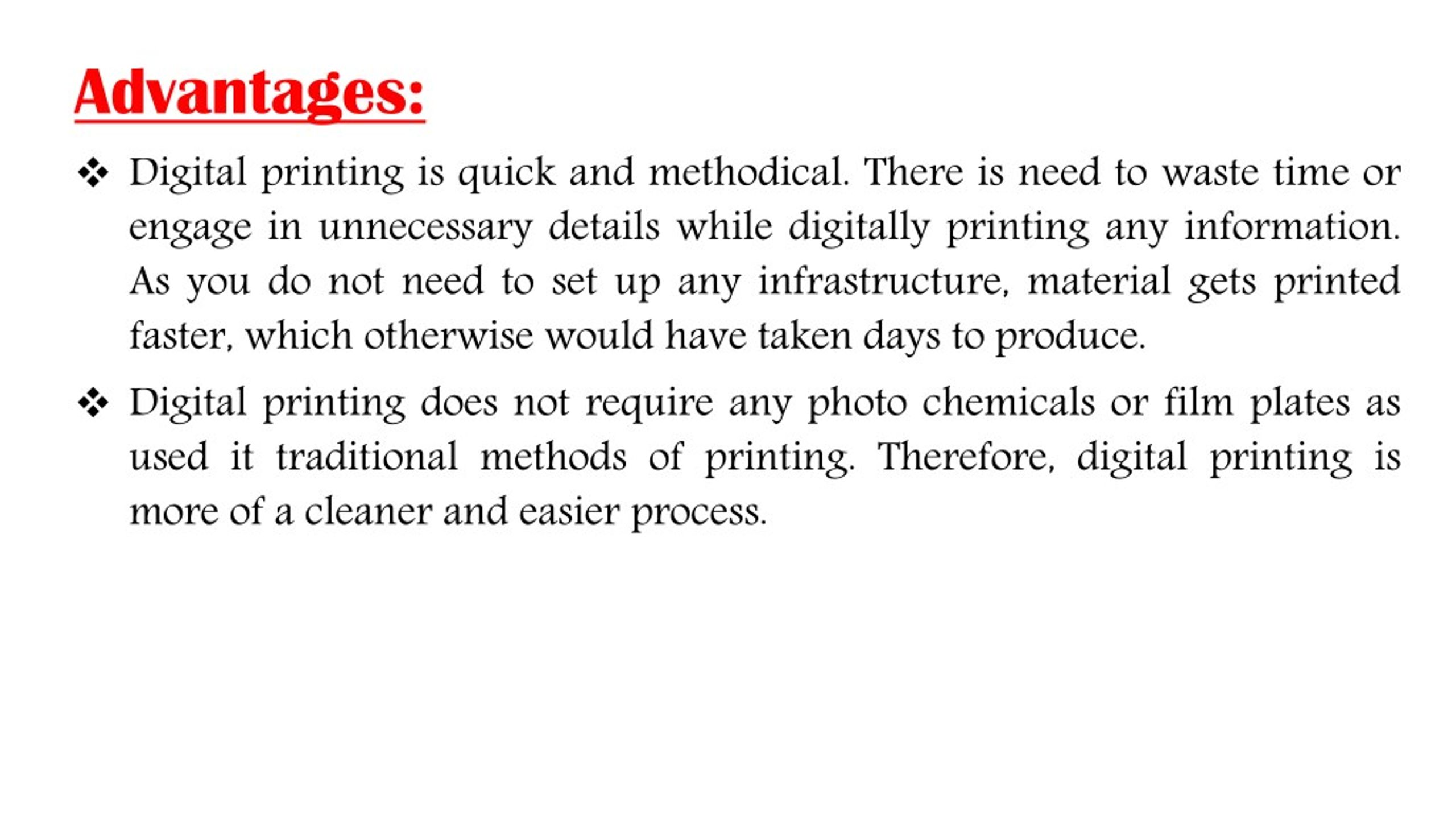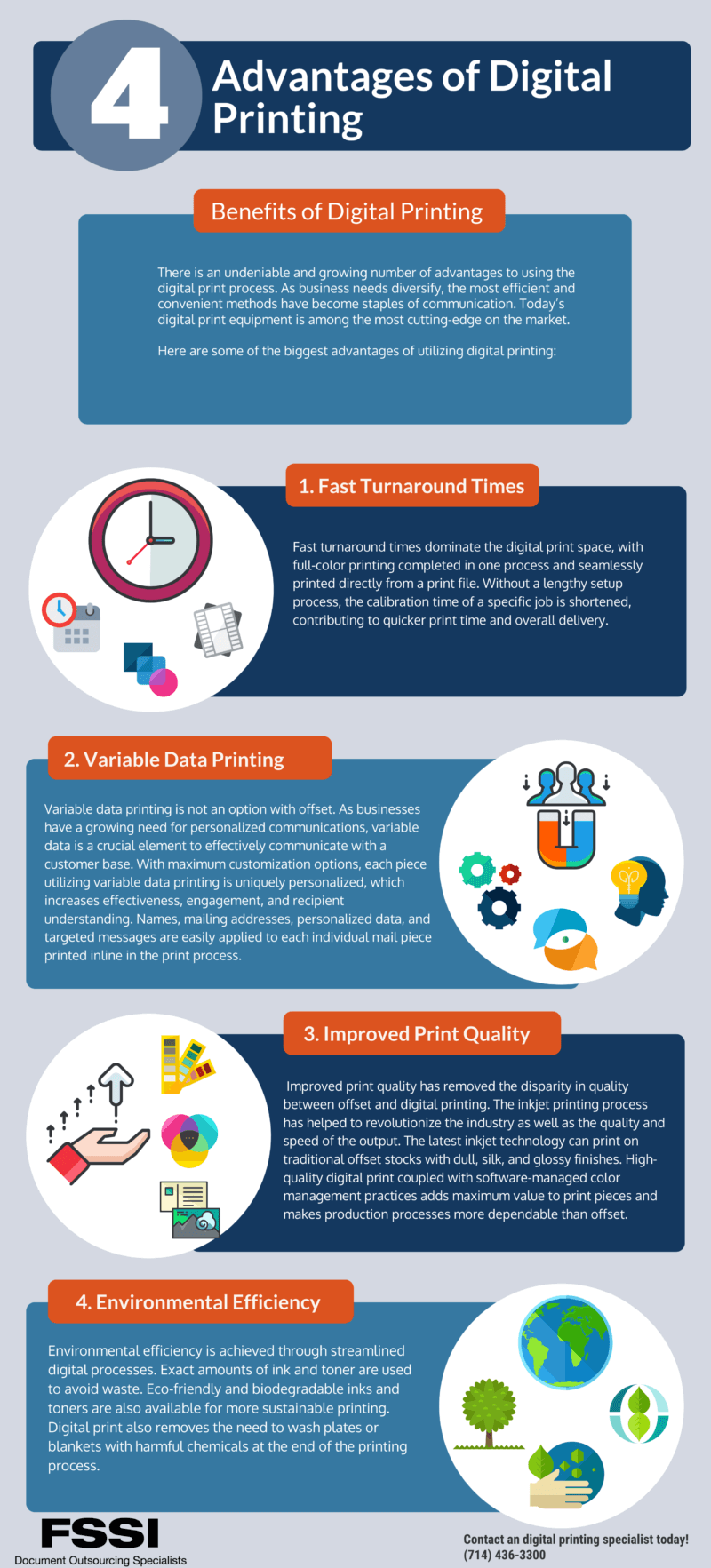See This Report on Digital Printing
See This Report on Digital Printing
Blog Article
4 Simple Techniques For Digital Printing
Table of ContentsThe Facts About Digital Printing RevealedThe Digital Printing DiariesTop Guidelines Of Digital PrintingExamine This Report about Digital PrintingSome Known Facts About Digital Printing.Digital Printing Can Be Fun For Everyone
Variable information printing, such as direct mail with customized codes and addresses, is preferably fit for digital printing. Digital fast printing just needs 4 actions of design, testimonial, printing and binding to obtain whatever done. Digital quick printing has an unmatched advantage: print on demand.According to PMMI, electronic printing permits brand names and producers to respond promptly to consumer needs while improving the supply chain, minimizing warehousing price and waste, and appreciating faster time to market. That all noises fantastic, however how does this modern technology do all that? The major differentiator of these innovations is that there are no set-up costs and no plates with electronic printing.
The Basic Principles Of Digital Printing
According to Wikipedia, the best difference in between electronic printing and typical approaches such as lithography, flexography, gravure, or letterpress - Digital Printing is that there is no requirement to replace printing plates in electronic printing, whereas in these analog printing techniques home plates are consistently changed. This results in quicker turnaround time and reduces price when making use of digital printing.
Digital printing is extremely adaptable, so it's easy to make adjustments to the package layout rapidly. It all goes back to the plates.
With conventional printing approaches, short-run printing is simply not feasible. Because a wonderful style can make or damage your item, digital printing continually produces high-grade, clear and vivid graphics each time.
Digital printing is the procedure of printing digital-based images straight onto a selection of media substratums. There is no need for a printing plate, unlike with countered printing. Digital data such as PDFs or desktop posting documents can be sent out directly to the electronic printing press to publish on paper, picture paper, canvas, material, synthetics, cardstock and other substrates.
4 Simple Techniques For Digital Printing
According to PMMI, digital printing permits brand names and suppliers to react quickly to customer needs while boosting the supply chain, decreasing warehousing price and waste, and appreciating faster time to market. That all audios wonderful, but how does this modern technology do all that? The significant differentiator of these innovations is that there are no set-up fees and no plates with electronic printing.
According to Wikipedia, the best distinction between electronic printing and standard approaches such as lithography, flexography, gravure, or letterpress is that there is no requirement to replace printing plates in digital printing, whereas in these analog printing techniques the plates are repetitively changed. This results in quicker turnaround time and reduces price when utilizing electronic printing.

How Digital Printing can Save You Time, Stress, and Money.
With standard printing approaches, short-run printing is simply not feasible. Due to the fact this page that an excellent style can make or break your item, digital printing continually produces high-grade, clear and vivid graphics each time.

According to PMMI, digital printing permits brand names and producers to react promptly to client demands while improving the supply chain, reducing warehousing expense and waste, and taking pleasure in faster time to market. That all sounds terrific, but just how does this modern technology do all that? The significant differentiator of these innovations is that there are no set-up costs and no plates with electronic printing.
Things about Digital Printing
According to Wikipedia, the best distinction between electronic printing and typical methods such as lithography, flexography, gravure, or letterpress is that there is no need to replace printing plates in digital printing, whereas in these analog printing approaches home plates are repeatedly changed. This results in quicker turn-around time and reduces price when making use of digital printing.
Rapid manufacturing implies getting your product to market much faster. It additionally implies it's much easier and faster to make adjustments later, when you transform a dish, add a SKU, or develop seasonal packaging. Digital printing is you could look here extremely adaptable, so it's simple to make changes to the package style promptly. It all returns to the plates.

The Ultimate Guide To Digital Printing
Digital printing is the process of printing digital-based pictures straight onto a selection of media substratums. There is no need for a printing plate, unlike with offset printing. Digital documents such as PDFs or desktop computer posting data can be sent out straight to the digital printing press to publish theoretically, picture paper, canvas, material, synthetics, cardstock and other substratums.
Report this page